
12 minute read
Green steel with open bath furnaces
FURNACES
Green steel with open bath furnaces
The steel sector is the second largest industrial CO2 emitter, and responsible for approximately 7% of global CO2 emissions.[1,2] Given the Paris Agreement of 2015, the decarbonization of steel production is of urgent importance to support the limitations on global warming.[3] With this in mind, the open bath furnace is an increasingly important solution for reaching decarbonization goals. By Brett Belford1, Leander Reuter2 , and Tim
Kleier3
1. Senior divisional specialist, green steel; 2. R&D specialist, green steel; 3. Head of green steel, SMS group in Dusseldorf
IN the steelmaking value chain, targeting CO2 reductions in the ironmaking stage of the conventional blast furnace (BF) – basic oxygen furnace (BOF) route offers the largest opportunities. The BF-BOF route accounted for 73% of steel produced in 2020.[4] With an average footprint of 1.9 CO2, eq. per ton of crude steel[5,6], decreases in emissions of this dominant sector offer the largest reductions.
Fig 1
Multiple technology options are emerging in the race to decarbonize iron production. But to be a viable short-to-medium-term candidate, the technology must: 1. Offer substantial CO2 footprint reductions against the conventional BF-BOF route. 2. Be in a state of immediate technology readiness. 3. Be capable of producing millions of tons of hot metal per annum. 4. Be capable of producing valueadding slag as a by-product. 5. Replace ironmaking plants on existing sites to allow brownfield adaptation while integrating with existing upstream routes for the shortest time to market of the resultant steels. 6. Offer an operational cost base comparable with existing processes. 7. Offer proven versatility in processing low-grade iron ores. 8. Offer opportunities for future adoption of non-fossil utilities and raw materials such as hydrogen and bio-carbon.
In the race to carbon neutrality, the technologies that meet the above listed criteria are limited. One leading candidate is the combination of the well-proven direct reduction of iron using a shaft furnace operating on natural gas (direct reduction plant/DRP), in conjunction with an open bath electric furnace (OBF). Alternative configurations incorporating an OBF can be combined with other reduction technologies producing a DRI feed.
This article aims to emphasize the immediacy of the need for mature technologies to initiate and sustain steel decarbonization, and suggest the OBF as a candidate for short-term deployment by summarizing its key attributes and advantages.
The task at hand
The immediate steel decarbonization task is substantial. The International Energy Agency (IEA) projects that the global steel industry has to cut total emissions by at least 50% by 2050.[2,7] However, despite stagnant or even slightly decreasing steel consumption per capita globally, overall demand is expected to rise due to population growth until at least 2050.[2,5,8] In consequence, specific emissions will have to decline even more by at least 60% to meet total emission targets.[2] The corresponding scenarios developed by the IEA can be observed in Fig 2.
When comparing current national netzero targets with their respective national integrated steelmaking production in 2020, a whopping 35 - 37 Mt of production have to be decarbonized every single year from today until 2050 in order to meet those net zero targets (Fig 3).
Increasing scrap availability and recovery rate, coupled with a shift towards a larger share of secondary steelmaking, will enable a portion of the emission cuts based on available technology and processes.
Overall, finite availability of steel scrap puts a limit on this emission reduction potential. Low-gangue ore feed for natural gas or hydrogen-based direct reduction and immediate melting in an electric arc furnace (NG DRI-EAF or H2 DRI-EAF route) suffers from the same problem, but with projected declining raw material availability and quality. As per Fig 4, the IEA foresees a total production share of 380Mt/yr based on direct reduced iron, of which more than 50% would have to be processed in electric reduction smelters due to insufficient highgrade ore supply for economic EAF melting.
Experience and short-term enablers for steel decarbonization
Against the backdrop of the immense task at hand, it is clear that immediate progress must be made. To successfully deploy a large-scale DRP-OBF plant in the short term, qualifying suppliers should demonstrate key attributes that are already entrenched in their organization: 1. Foundational knowledge of the design and operation of the BF-BOF route. 2. In-house knowledge on the design, construction and operation of DRPs and electric reduction smelters.
FURNACES
Fig 1.Share of world crude steel production by technology route in 2020.[4] Fig 2. Possible future world crude steel production with corresponding CO2 emission targets
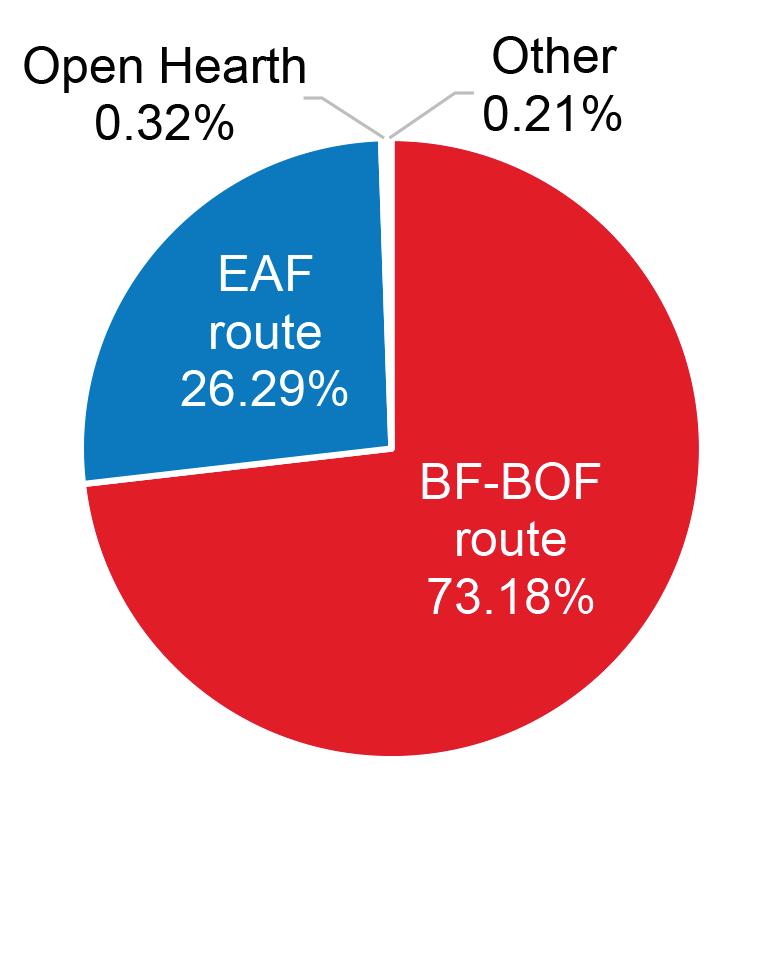

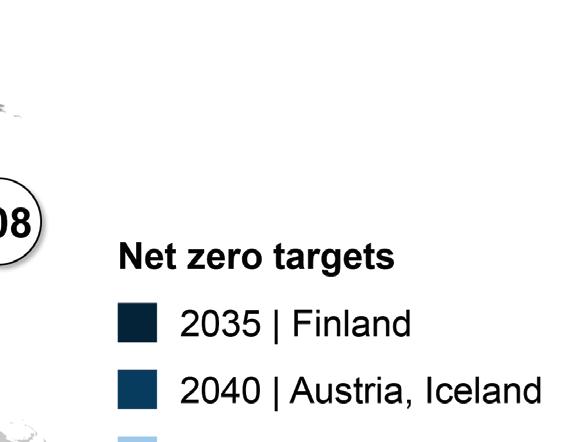

Fig 3. Crude steel production by BF-BOF route per region in conjunction with national/regional net zero targets.[4]



3. Proven references for the DRP at high throughputs utilizing low-grade iron raw materials. 4. Proven references for high-powered electric reduction furnace technology. 5. Proven references for best available technologies in emission reduction and granulation.
As a leading supplier of steelmaking plants, the SMS group is uniquely positioned to offer a signifi cantly decarbonized ironmaking route. This ability rests on the multiprocess knowledge base summarized in Fig 5, complementing the above listed drivers for short term deployment of DRP-OBF plants.
To complement the strong grounding in each of the foundational elements of the DRPOBF technology route, SMS group has to date undertaken numerous green iron studies for leading international steel producers looking to identify decarbonization roadmaps for their individual sites and circumstances. Each of these studies is unique, with no onesize-fi ts-all solution for each client nor for each site.
At a macro level, the region in which the plant is located is driving the decarbonization timeline, affecting the availability and price of feed stocks and utilities, determining the future links to green power and hydrogen networks, and driving the technology selections to manage the ‘green’ handling of waste streams.
Fig 4. Estimated shares of steel production by route in 2050 by a total forecast of 2000 mio tCS p.a.[2]
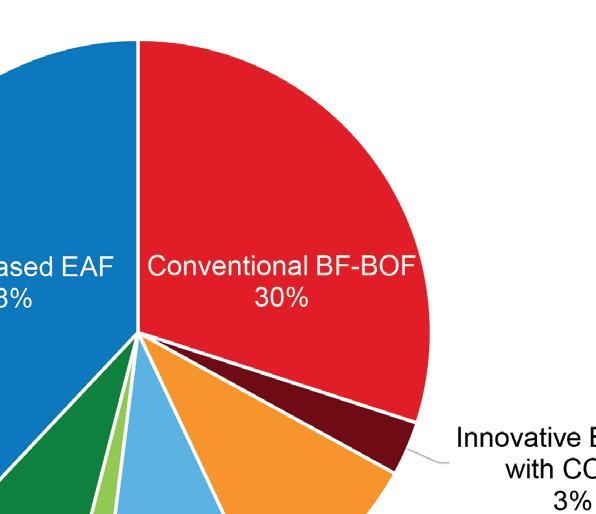

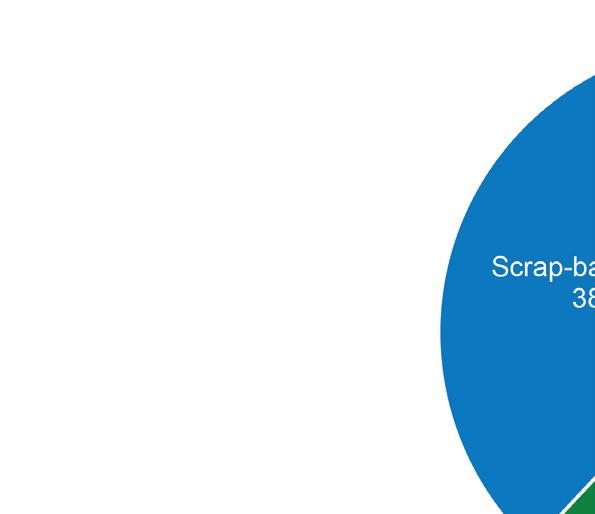
FURNACES


Fig 5. SMS group‘s technology portfolio for the primary stage of steelmaking
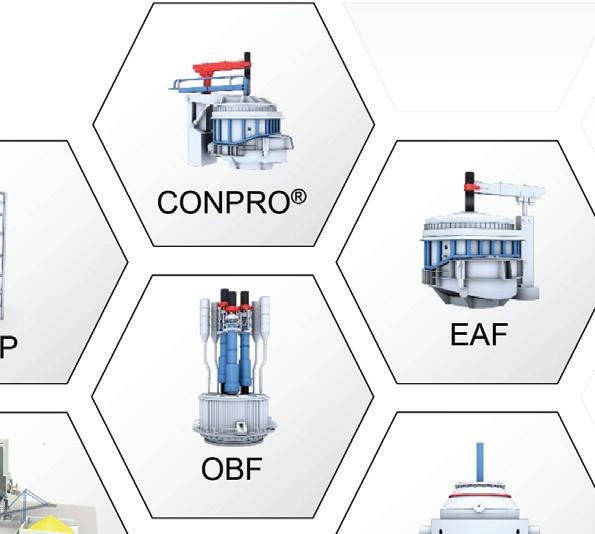
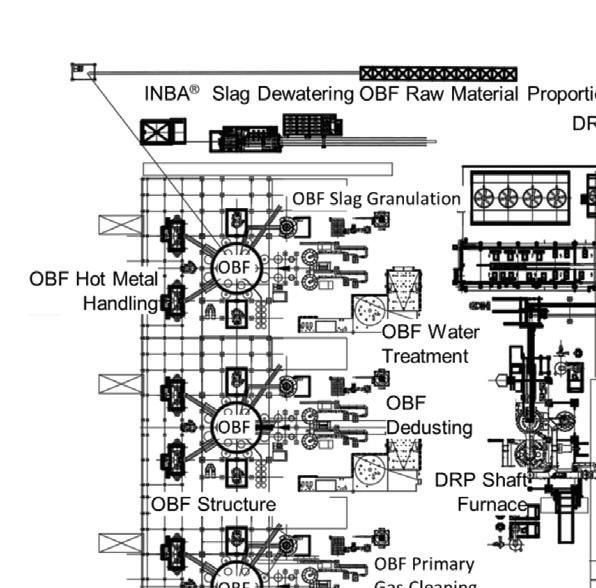
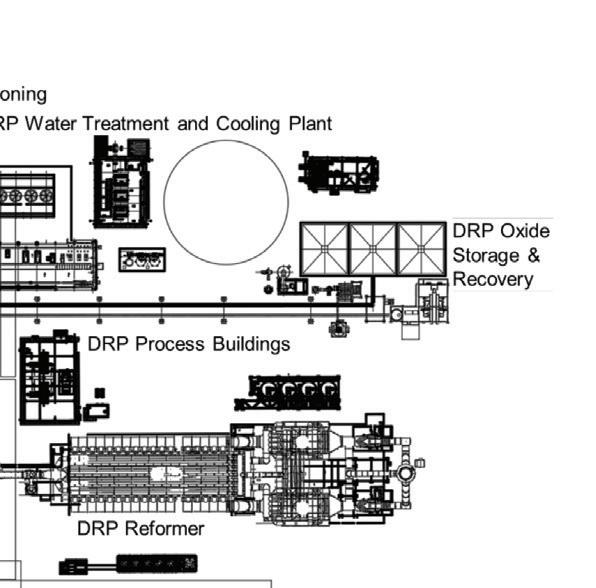
Fig 6. Confi guration of three circular OBFs linked to an associated 2.5 Mt/yr DRP
Additionally, the regional price of CO2 emissions and the impact of regional import barriers for high CO2 footprint steels will continue to alter the medium- and long-term operational expenditure of certain production routes.
The SMS group’s combination of the key enablers to immediately deploy an ironmaking alternative, coupled with the growing experience in practical application of this technology to real-world sites, makes us a leading partner for short-term decision making and execution of decarbonizing existing integrated or green fi eld steel plants.

Open bath furnace technology and its suitability as a major ironmaking alternative.
A key advantage of the DRP-OBF is that it can be adopted within the integrated route, or installed on a greenfi eld site. The combination of the DRP and OBF replaces the BF and its associated sintering, stove and coke facilities. The ideal combination of a DRP and associated OBFs is to have both installed immediately alongside one another. This enables the DRI to be fed at an elevated temperature directly to the OBF, making use of the sensible energy to lower the specifi c energy consumption.
The upper limit on OBF throughput from a single vessel is constrained currently at circa 1.5 Mt/yr hot metal production. The current proven ceiling on shaft furnace DRP production is 2.5 Mt/yr DRI. A viable arrangement for such a confi guration is a freestanding DRP linked via hot feed conveyor to at least two OBFs. Fig 6 presents a layout of three circular OBFs associated with a 2.5 Mt/yr DRP. An alternative confi guration linked to the same DRP capacity could be only two rectangular OBFs. Either confi guration could satisfy the required throughput, with the fi nal decision often resting on the particular needs of a given site.
The OBF does have the distinct advantage that it can be uncoupled from the upstream DRI production step. The OBF can accept metallic feed in the form of HBI or DRI that is produced in an alternative location and transported to the site at which the smelting takes place.
Another advantage is that the products of the OBF largely mimic those of the blast furnace. As seen in Table 1 and Table 2, both the hot metal and slag properties are comparable. Specifi cally for the slag, fl uxing agents can be dosed to the OBF to fi ne-tune slag composition. In addition, the DRP-OBF process is not limited to feed from a highquality oxide pellet source. The nature of the reducing environment in the OBF means that the DRP-OBF combination can consume BFgrade pellets with higher gangue quantities

Fig 7. Distribution of global iron ore production by iron content with given ranges of suitability for the EAF and OBF process
FURNACES
Element Blast furnace [wt.-%] Open bath furnace [wt.-%]
C 4.5 4.5 Si 0.75 <0.5 Mn 0.13 – 0.15 0.14 S 0.02 – 0.025 0.025 – 0.03 P 0.10 – 0.12 0.02 – 0.03
Fe Tapping temperature
94.6 – 94.8 1,480 – 1,500 °C
94.7 – 94.8 1,490 – 1,510 °C
Table 1. Element composition of blast furnace hot metal and open bath furnace hot metal
Slag component Blast furnace [wt.-%] Open bath furnace [wt.-%]
CaO SiO2 MgO Al2O3 FeO S
41 – 43 37 – 38 7.3 – 7.5 10.5 – 11.0 0.3 – 0.5 0.75 – 0.80 40.5 – 41.5 36.5 – 37.5 7.0 – 7.5 10.5 – 11.0 0.6 – 0.7 0.50 – 0.60 forecasted rising steel demand, the current CO2 footprint of the dominating integrated steel route has to be lowered. This can be achieved by reducing the emissions of the CO2-intensive ironmaking stage. The market-ready combination of the DRP-OBF offers the production of suitable quantities of high-quality hot metal that can be integrated into existing steelmaking sites. Moreover, this technology can be deployed immediately. In the future, further CO2 reduction will be possible in the same DRP-OBF plants through integration of green hydrogen and biocarbon sources. �
References
MnO *TiO2 Other Tapping temperature
0.15 – 0.20 0.60 – 0.65 0.8 1500 – 1550 °C
* TiO2 in the fi nal slag is driven by the feed materials. 0.20 – 0.25 0.50 – 0.60 2 1550 °C
Table 2. Composition of blast furnace slag and open bath furnace slag
and still deliver high yields and BF-type slags with FeO contents less than 1 wt.-%.
Fig 7 presents the range of suitability of global iron ores mined for the EAF and OBF processes. The span suitable for the OBF is seen from iron ore sources with a total iron content as low as 58 wt.-%Fe to those of the highest quality.
In addition to the hot DRI fed to the OBF, up to 5% of the OBF material feed can be comprised of agglomerated waste or free-fl owing scrap as shown in Fig 8. This allows steel plants to consume wastes arising from their existing facilities by utilizing an inexpensive agglomeration process to prepare these for addition to the furnace. BOF sludge and mill scale are popular considerations, as well as any waste streams high in fl uxing components such as CaO. The addition of waste and scrap to the furnace does come at a power penalty, with 1% waste feed accounting for an increase in OBF real power of between 2 - 3%.
The ability to generate a BF-type slag that can be used as a clinker substitute by the cement industry is not a factor to be overlooked. It offers the plant owner a desirable, sellable by-product, thus improving OPEX potential, and reduces the CO2 footprint of the cement industry downstream signifi cantly.
Given that multiple OBFs are required to accept and process the HDRI feed from the largest DRPs, an inherent benefi t is the fl exibility of the hot metal tapping. Multiple tap holes, tapping sequences and quantities can be adjusted to exactly match the downstream steel plant requirements, with a reduced dependency on the hot metal buffering typical of existing blast furnaces.
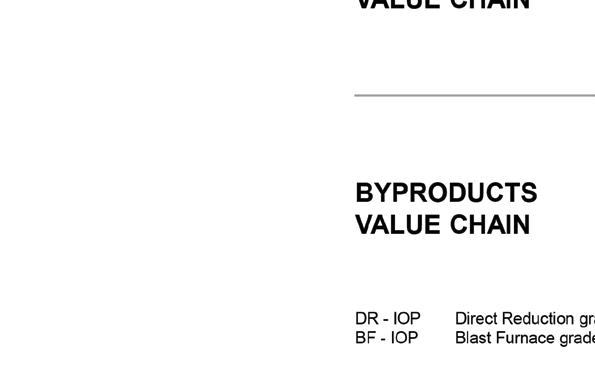
Conclusion
The Paris Agreement’s limitations on global warming and regional net-zero goals place steel producers under immense pressure to decarbonize rapidly. Accompanied with
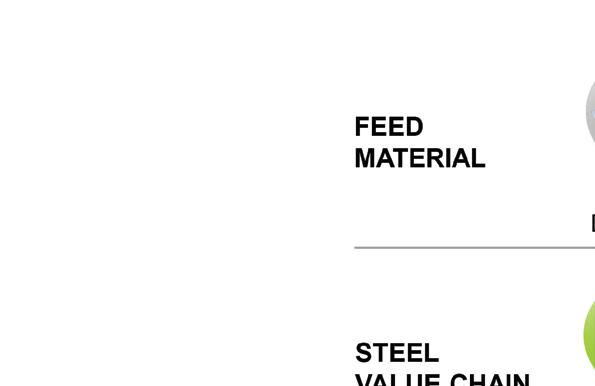
[1] H. Ritchie, M. Roser, P. Rosado, Our World in Data 2020. [2] International Energy Agency, Iron and Steel Technology Roadmap: Towards more sustainable steelmaking, OECD 2020. [3] UNFCCC, in United Nations Framework Convention on Climate Change 2015. [4] World Steel Association, World Steel in Figures 2021, Brussels, Belgium 2021. [5] World Steel Association, Sustainability Indicators: 2021 report, Brussels, Belgium 2021. [6] World Steel Association, Steels’s Contribution to A Low Carbon Future and Climate Resilient Societies: World Steel Position Paper, Brussels, Belgium 2018. [7] M. R. Allen, H. de Coninck, O. P. Dube, O. Hoegh-Guldberg, D. Jacob, K. Jiang, A. Revi, J. Rogelj, J. Roy, D. Shindell, W. Solecki, M. Taylor, P. Tschackert, H. Waisman, Technical Summary: An IPCC Special Report on the impacts of global warming of 1.5 °C 2018. [8] R. Haslehner, B. Stelter, N. Osio, Steel as a Model for a Sustainable Metal Industry in 2050 2015.
Fig 8. DRP-OBF valuation chain indicating the circulation of waste and scrap
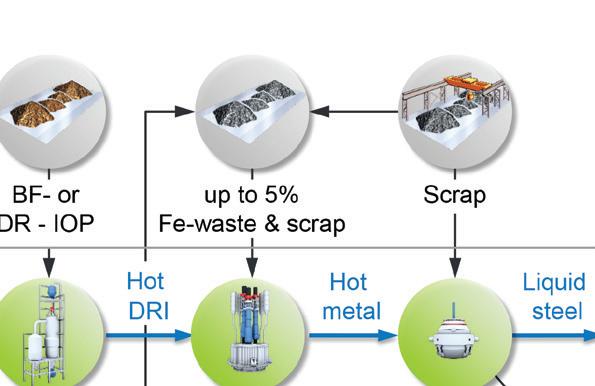
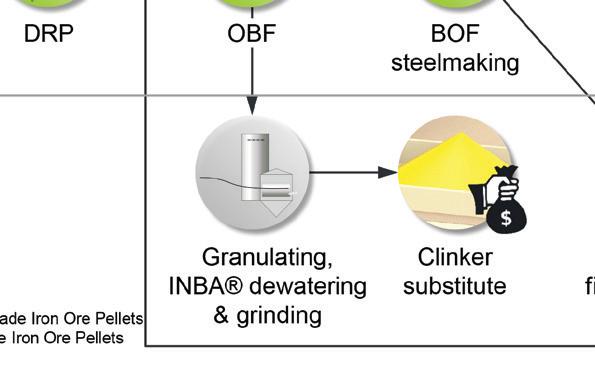
DIGITAL + PRINT SUBSCRIPTIONS NOW AVAILABLE
Get the steel industry's most informative read, direct to your inbox or letterbox. Subscriptions include eight issues a year, the annual directory, two additional digital supplements and much more!











